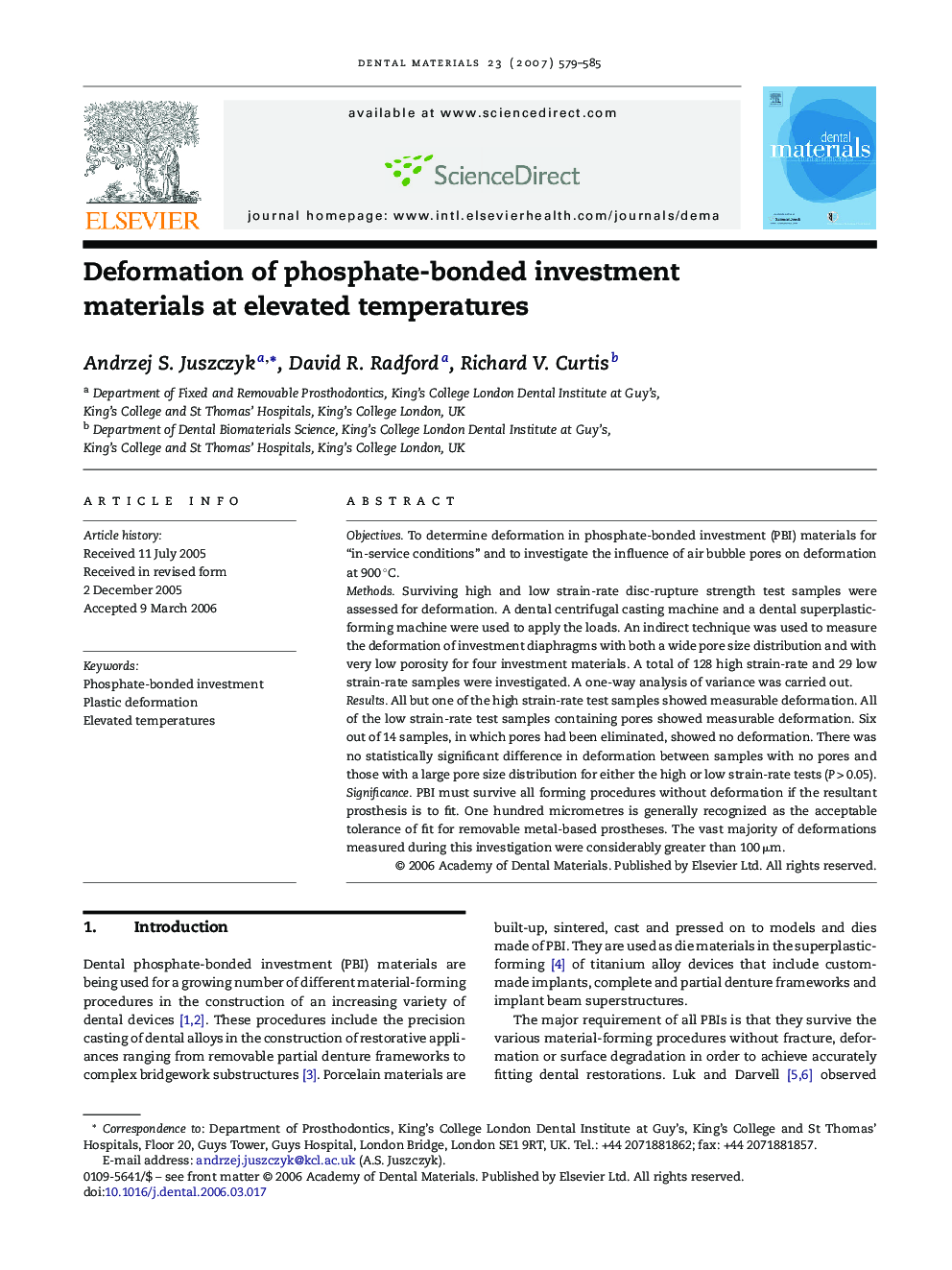| Article ID | Journal | Published Year | Pages | File Type |
|---|---|---|---|---|
| 1423351 | Dental Materials | 2007 | 7 Pages |
ObjectivesTo determine deformation in phosphate-bonded investment (PBI) materials for “in-service conditions” and to investigate the influence of air bubble pores on deformation at 900 °C.MethodsSurviving high and low strain-rate disc-rupture strength test samples were assessed for deformation. A dental centrifugal casting machine and a dental superplastic-forming machine were used to apply the loads. An indirect technique was used to measure the deformation of investment diaphragms with both a wide pore size distribution and with very low porosity for four investment materials. A total of 128 high strain-rate and 29 low strain-rate samples were investigated. A one-way analysis of variance was carried out.ResultsAll but one of the high strain-rate test samples showed measurable deformation. All of the low strain-rate test samples containing pores showed measurable deformation. Six out of 14 samples, in which pores had been eliminated, showed no deformation. There was no statistically significant difference in deformation between samples with no pores and those with a large pore size distribution for either the high or low strain-rate tests (P > 0.05).SignificancePBI must survive all forming procedures without deformation if the resultant prosthesis is to fit. One hundred micrometres is generally recognized as the acceptable tolerance of fit for removable metal-based prostheses. The vast majority of deformations measured during this investigation were considerably greater than 100 μm.
